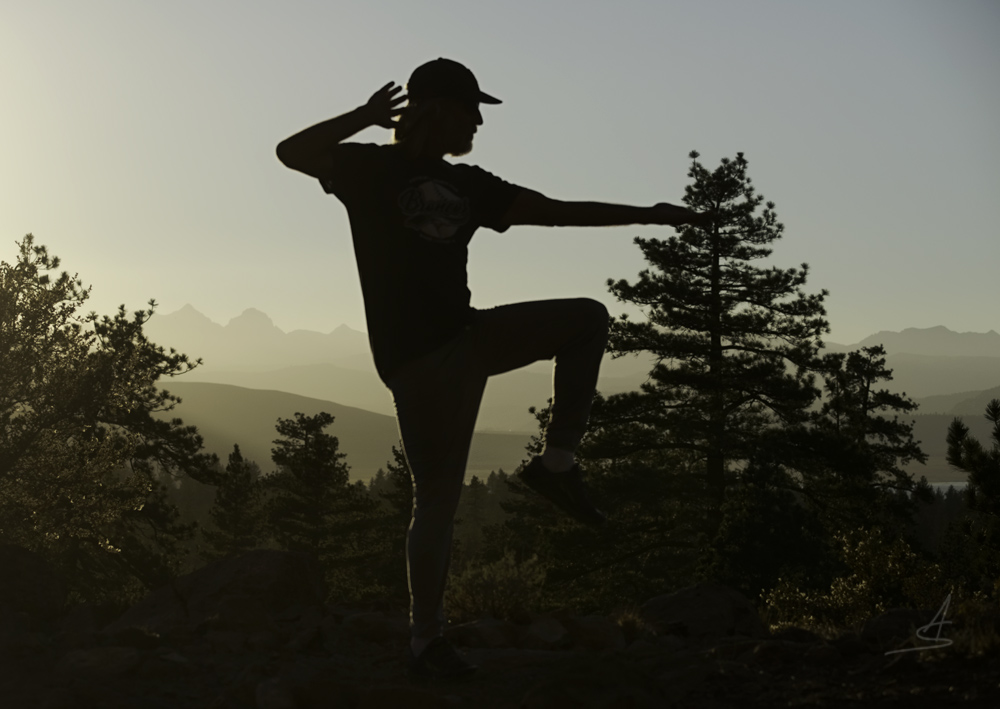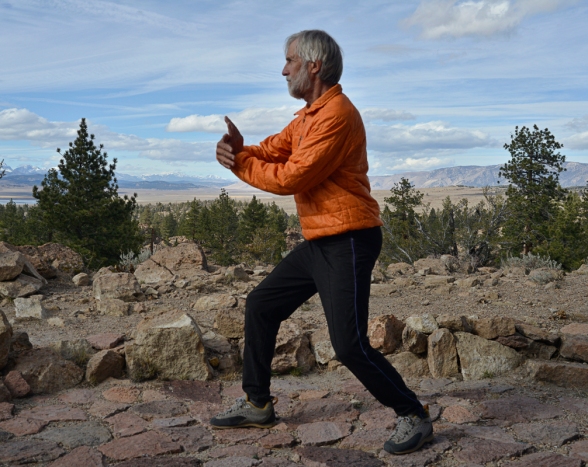Last week one of my T’ai-chi students relayed that an orthopedist had told her that we humans are prone to shoulder injuries because “the shoulder joint is not very well designed.” Yikes! My alarm bells rang red, because from a T’ai-chi standpoint this is a dangerous inversion of the vital concept of working in concert with our structure. I was tempted to spout the ancient truism: “we can’t break the rules of nature, but we can break ourselves on them.” Staying sedate though, I simply cautioned the student not to blindly accept that doctor’s line, and I explained how T’ai-chi runs with the opposite philosophy—that body success comes from following the path that optimizes our frankly amazing design.

Far from being faulty, our shoulder is a super-functioning joint without peer in the animal kingdom (except, as Leonardo found, our own foot-ankle system). “The” shoulder joint is actually a double confluence of the upper arm bone, collar bone and shoulder blade. The main focus of course is at the top of the arm bone, where a knob fits into a shallow socket in the broadened outer edge of the shoulder blade. Right above this main joint the collarbone and shoulder blade meet, but barely, to help cup that arm knob. Mostly these two support bones are floating wings that anchor a sophisticated, multi-layered sheathing-truss complex of muscles, ligaments and tendons. Basically they are “wing” bones and they and their muscles are fairly floating, pulling variously with and against one another to both hold the arm in place and pull it through an incredible range of actions.
If you look to joints with a mechanic’s expectation for interlocking bones fitting securely deep and puzzle-like, our shoulder structure looks feebly unstable. But if you see how the bones fit together just enough to enable the trusses’ dynamic functionality you can appreciate how our shoulders operate as masterpieces of action opportunity. We move our arms with power, stability and accuracy through all planes and many angles, in throwing, catching, pushing, pulling, lifting, swimming, reaching, hanging, swinging, hugging, defending…we can even put our arms to work behind our back. Only primates can do anything like these actions, and we can do them best of all because no other animal has an open-joint truss shoulder like ours. Of course all this is possible because we go around upright on two legs, with our arms freed from ground support. And this fact–that our arms are in ready command from our overall design as upright, two-legged animals–can cue us in to how to properly use our upper limbs. The fundamental idea of T’ai-chi is to move as a unified and grounded whole, and through this concept we learn that our shoulders are designed to transfer movements anchored in our spine and coordinated with our legs.
A couple of years ago I took my son took to a week of elite baseball training for pitching and hitting, and in watching his coached process I learned how the pros develop a continuously smooth and explosive, whole-body chain of force: launching off grounded legs they transfer and amplify that initiation up and out through a rotating, flexing and shifting spine and on through the shoulder(s) and arm(s), to a target. In the camp each player’s movement patterns were analyzed for problems (generally, forcings and weaknesses) that were labeled “opportunities” for enhancement. People throw and hit baseballs at 100+ mph without injury only through balanced and accurate transfers through each part of their whole-body power chain. Of course few of us put our bodies into that level of demand, but over years of more normal activity the message for effective and injury-free shoulder action is no different. The shoulder is designed not to be the source of whatever action our grasping mind might want to carry out but a hinge to transfer, enhance and direct actions initiated and anchored in our trunk and legs. Elite players develop what T’ai-chi practitioners have practiced for generations, moving from a good posture on solid footing and guiding their intention through relaxed and fluid shoulder “non-action.” When forces come at us the same body-integration gathers in reverse, from relaxed arms into the trunk and into grounded, springy legs. I like to remind my students with the phrase, “put your spine in charge, because it is.”
Many shoulder injuries arise, arguably, because we get enthralled with the joint’s amazing power and mobility and start using it literally unhinged from the rest of the body. In general I can advise to watch out for two common ways we misuse our shoulders: 1) by initiating action from the shoulder itself, and 2) by allowing chronic muscle tension, (often generated by anxiety and poor posture during sitting and driving) to hold the shoulders “up” against gravity. Don’t use your shoulder as the starting point to your push, use your torso and legs and adjust the shoulder to transmit the push solidly through the arms. And beware of how neck and shoulder tension can carry on into a chronic condition that pulls the shoulder into conflicting demands. When we forget the main of our body and ask the shoulder either to do the bulk of a task or conflicting tasks, we hurt ourselves.

Here are two additional suggestions for smoother shoulder action. First, keep a good posture and let the shoulders stay “long” and relaxed out from the neck (yay massage!), a position that keeps the truss muscles free for intended action. Second, start noticing during arm movements how you can relax the shoulder into a stronger and more stable alignment by incorporating rotation. When you’re reaching or pushing, pulling or gathering, play with turning the elbow and arm to spiral “in” or “out” some, and you’ll notice how you can usually find an optimum spiral that relaxes the shoulder and best connects the arm to the spine. A spiral is arguably nature’s most effective structure for transmitting force with stability, and when we can let the shoulder find the arm’s optimal spiral we can empty a lot of the work load off the muscles and ligaments and into the solidness of the bones.
The irony of living is that our best signal for reaching our fullest potential is ease. Ease is the feeling we get when our complexity comes together into actions that flow with our structure. But to find ease is not easy. We have to pay attention and prioritize listening more than forcing, and as we learn to recognize genuine ease the marvelous potential in our design comes to us clear and exhilarating.

